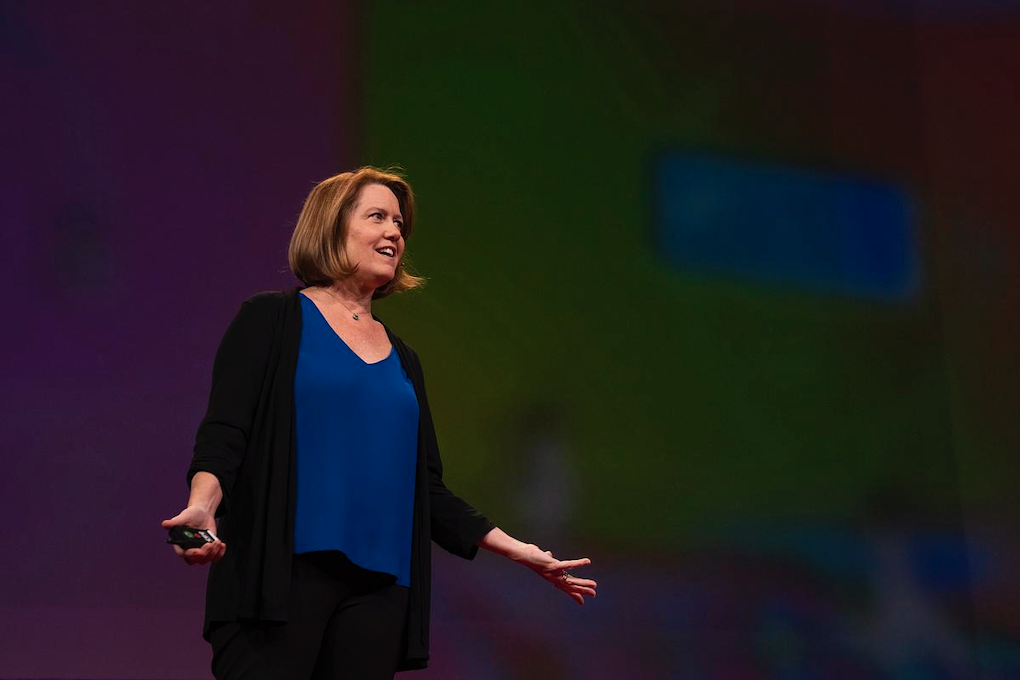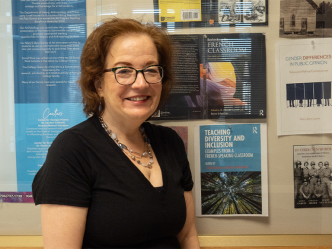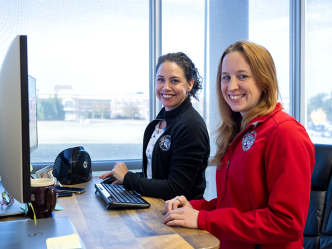Back pain is no joke. For many, chronic pain slows life down, leading to repeated emergency room visits and prescriptions for pain medication.
That’s why Amy Baxter, MD, created the patented DuoTherm in a life-saving and life-changing journey.
“Back injuries that end up in the ER translate into approximately 25% of people getting an opioid prescription, and an estimated 5% of those people will misuse opioids,” Baxter said.
The main goal: translate long-term research into a wearable device as a substitute for prescribing opioids for low-back pain. To help people with both acute and chronic pain, she built the device incorporating neuroscience to address the symptoms and reframe pain.
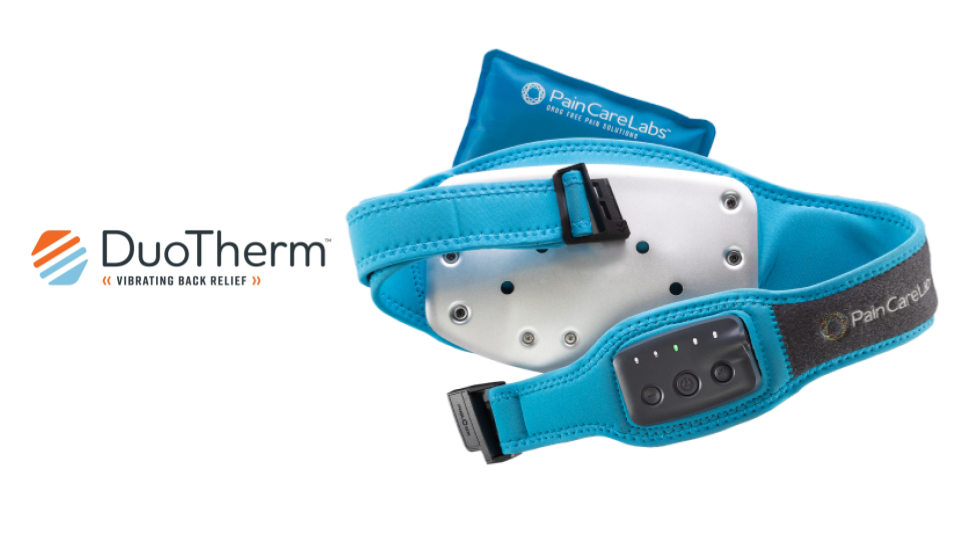
After beginning her career as a pediatric physician and practicing for more than 20 years, Baxter pivoted to pain prevention and research. As a clinical professor in the Department of Emergency Medicine at the Medical College of Georgia at Augusta University, she has published numerous articles on pain treatment and preventative measures for avoiding injury.
After years of recognizing patterns for treating pain, Baxter started a small business to combat needle pain with vibration and cold, funded by the National Institutes of Health and U.S. Food and Drug Administration. Her current research, funded by two grants from the NIH’s National Institute on Drug Abuse, yielded two studies: relieving and preventing chronic low-back pain and preventing opioid prescriptions.
“The first NIH-funded clinical trial demonstrated that a novel device reduced existing opioid use and eliminated prescribing and opioid risks in patients who had never used opioids for low back pain,” said Baxter. “This was exactly what the NIH had hoped – to prevent new opioid use disorder.”
Focusing her efforts and expertise on nonmedical treatments for pain, she’s seen remarkable outcomes, incorporating engineering into the mix.
Spearheading the creation of Pain Care Labs, Baxter’s first experience in biohacking technology began with Buzzy, an over-the-counter needle pain device. The vibrating “bee” offers a pain-nerve blocking neurotransmitter frequency with cold therapy – soothing comfort for children receiving shots and vaccines.
Seeing the positive results of Buzzy got Baxter thinking, “How could we adapt the technology to a wearable low-back pain therapy device?”
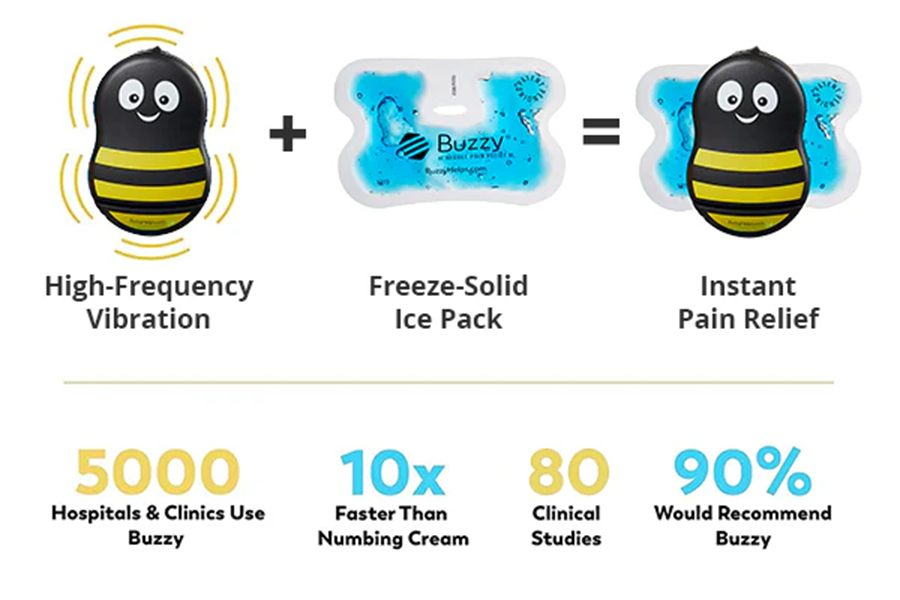
That led her to create DuoTherm, an innovative approach to relieve damage from low-back injuries utilizing a combination of the right frequency of thermal therapies and mechanical stimulation, or mStim.
“After trials wearing the device, our studies showed that 25% of the most severely affected people resolved their low-back pain within eight weeks,” Baxter added. “I believe the combination of the right frequencies and pressure from vibration, combined with heat therapy and muscle engagement, increased blood flow to the muscles and fascia. This lets pain nerves slide through, rather than triggering pain with each movement, pain response.”
She has studied multimodal and noninvasive pain management for 25 years and pioneered the field of frequency-specific vibration for procedural pain. Baxter’s work was recognized in two recently published studies in Frontiers in Pain Research.
According to Baxter, the primary reason for prolonged or chronic back pain is pain nerve endings stuck in fascia. The key lies in increasing blood flow by applying a wide range of frequencies at the same time over the entire lower back fascia, adding thermal therapy to help release the nerves.
“We discovered that those individuals who wore the device while working and staying mobile experienced a reduction in pain,” Baxter said. “Movement is medicine. While the fast Buzzy frequency is most effective at shutting the gate on sharp pain, preventing pain takes a more comprehensive approach.”
Baxter shared her story and research in a TED Talk in 2023, guiding the audience to understand “how to reframe pain.”
“Dr. Baxter’s work on multimodal pain management is critically important to clinicians and patients,” said Richard Swartz, MD, who worked closely with Baxter at MCG before recently retiring. “Innovations such as DuoTherm, as part of a multimodal pain management plan, treat painful conditions without the risks posed by narcotic medications.”
Prevention and progress
In addition to treating back pain in a noninvasive way, Baxter has conducted extensive research to create a theory explaining prolonged inoperable pain, often called “nonspecific,” on imaging studies like MRIs. This critical work produced significant findings, and the outcomes looking at preventing and reversing chronic low-back pain disability were recently published in Frontiers.
“I think the mechanism of the device relates to hydrating and loosening the paraspinal muscle fascia with widespread random or ‘stochastic’ vibration,” Baxter said. “This effect was more effective than trying to block or distract from pain with TENS. We recruited in a chiropractic office, so both groups were getting a treatment with good support in addition to kinetic or electrical energy.”
Catherine Davis, PhD, is a longtime colleague and attended college with Baxter. Echoing the significance of the impact that DuoTherm brings to those suffering from chronic back pain, Davis focused on the preventative benefits over traditional transcutaneous electrical nerve stimulation, more commonly known as TENS.
“The results of the comparison of mStim versus TENS, an established treatment for back pain, are really impressive,” Davis said. “Overall, mStim performed at least as well as TENS in the short term (10 days). Numerous results show dramatically better results for mStim.”
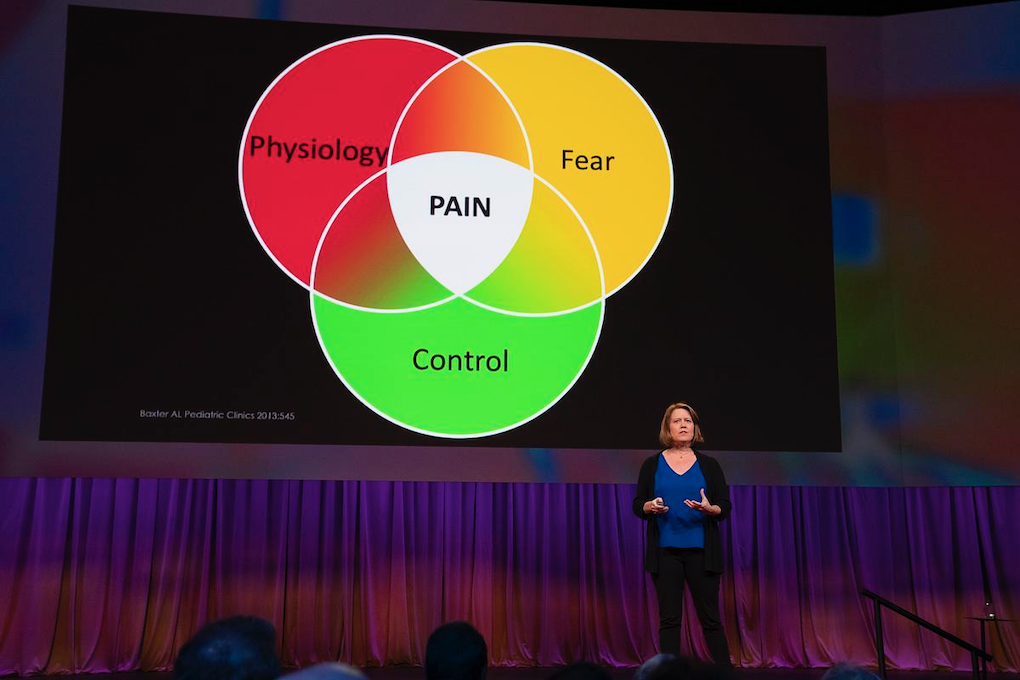
According to Baxter’s research, results indicated a pattern that pain intensity and disability improved faster, providing more relief with DuoTherm than TENS in patients with both acute and chronic back pain. They found that those with higher severity, about a quarter of mStim users reached no disability, compared with fewer than 1 in 10 using TENS. The advantage of mStim over TENS was more dramatic in more severe patients.
“This novel wearable device significantly outperformed electrical stimulation in restoring function and preventing chronic pain among adults with moderate-to-severe low back pain,” Baxter said. “Compared to electrical stim, adding DuoTherm vibratory thermomechanical stimulation to routine care for 30 minutes daily showed a decrease in chronic pain.
“Most significant, though, was the finding that those with new acute back pain using DuoTherm were three times less likely to have chronic pain at three months than TENS users,” added Baxter.
Another important clinical finding was a reduction in opioid use by almost half (45%) in those with existing pain or chronic opioid use who were using DuoTherm, while the use increased in those randomized to TENS.
Baxter’s work has caught the attention of the National Institute on Drug Abuse, with a focus on the HEAL method: help and end addiction long-term. According to Baxter, pain-free is too high a bar to set.
“DuoTherm will go through a 2- to 3-year process of review by the FDA and the Centers for Medicaid and Medicare to be covered and available to patients,” she said. “The device is currently under review by the FDA for breakthrough status, which could let patients get access almost twice as quickly. If pain can be managed and made bearable, individuals can lead productive lives.”
 Augusta University
Augusta University
